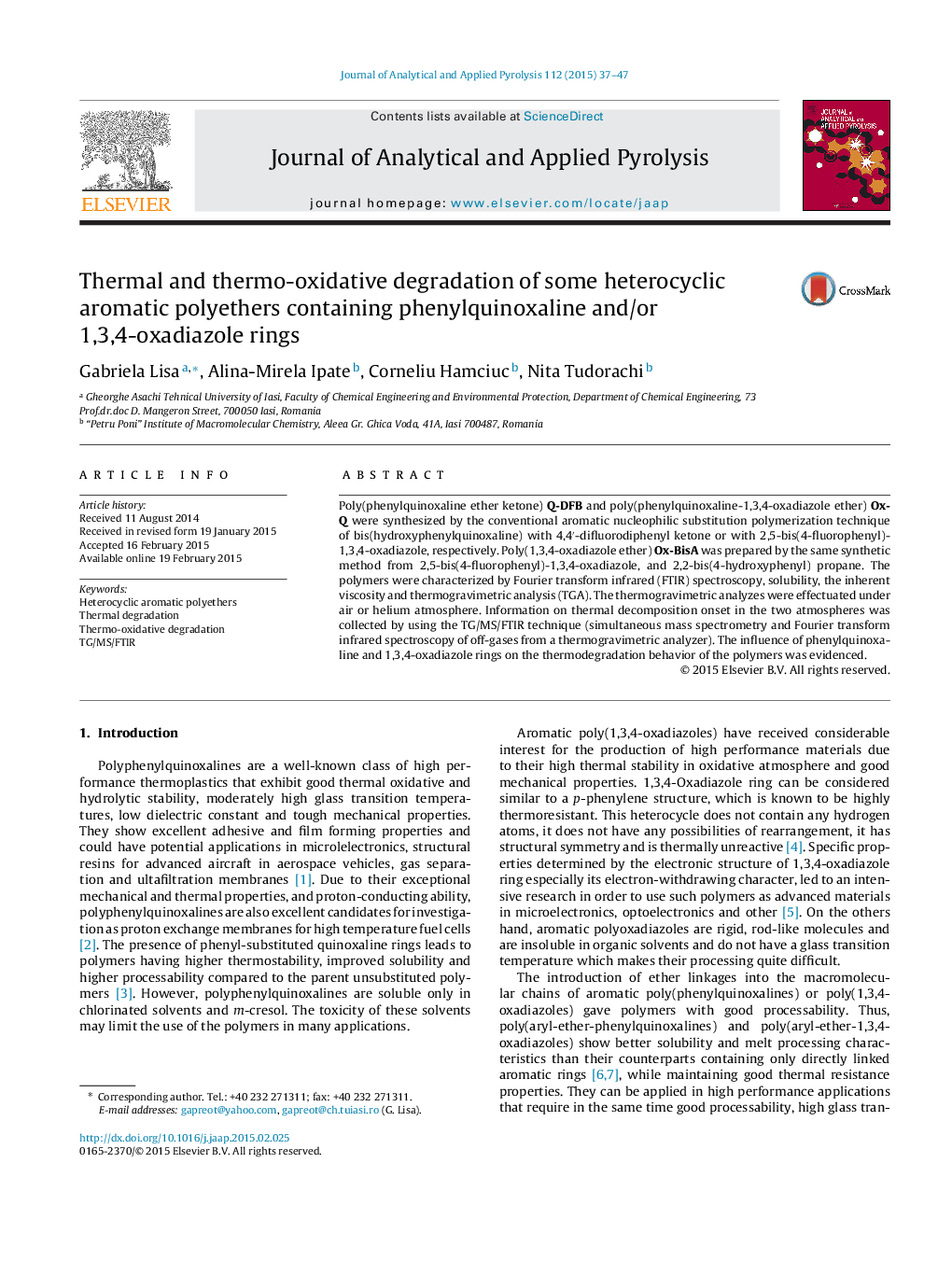| Article ID | Journal | Published Year | Pages | File Type |
|---|---|---|---|---|
| 1197215 | Journal of Analytical and Applied Pyrolysis | 2015 | 11 Pages |
•Some heterocyclic aromatic polyethers were synthesized.•Thermal stability in air and helium were investigated.•The influence of structure on the thermal degradation mechanism of the polymers was evidenced.
Poly(phenylquinoxaline ether ketone) Q-DFB and poly(phenylquinoxaline-1,3,4-oxadiazole ether) Ox-Q were synthesized by the conventional aromatic nucleophilic substitution polymerization technique of bis(hydroxyphenylquinoxaline) with 4,4′-difluorodiphenyl ketone or with 2,5-bis(4-fluorophenyl)-1,3,4-oxadiazole, respectively. Poly(1,3,4-oxadiazole ether) Ox-BisA was prepared by the same synthetic method from 2,5-bis(4-fluorophenyl)-1,3,4-oxadiazole, and 2,2-bis(4-hydroxyphenyl) propane. The polymers were characterized by Fourier transform infrared (FTIR) spectroscopy, solubility, the inherent viscosity and thermogravimetric analysis (TGA). The thermogravimetric analyzes were effectuated under air or helium atmosphere. Information on thermal decomposition onset in the two atmospheres was collected by using the TG/MS/FTIR technique (simultaneous mass spectrometry and Fourier transform infrared spectroscopy of off-gases from a thermogravimetric analyzer). The influence of phenylquinoxaline and 1,3,4-oxadiazole rings on the thermodegradation behavior of the polymers was evidenced.
